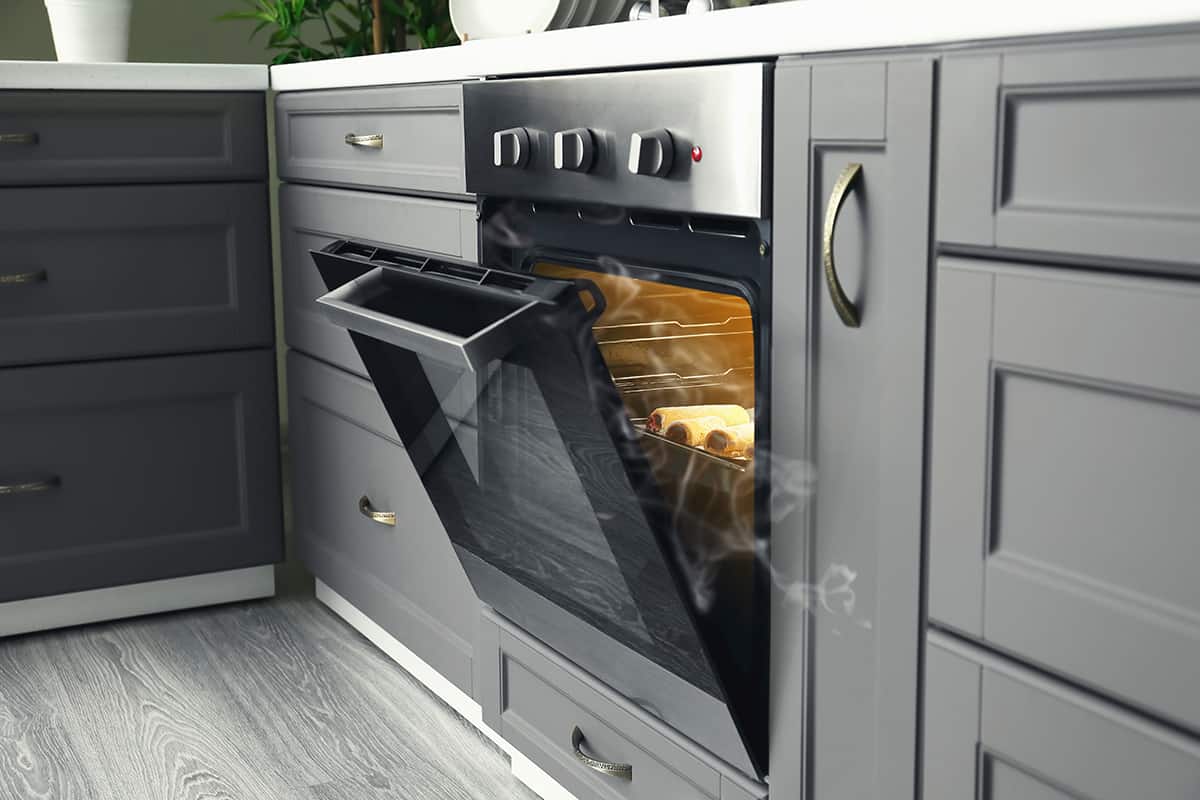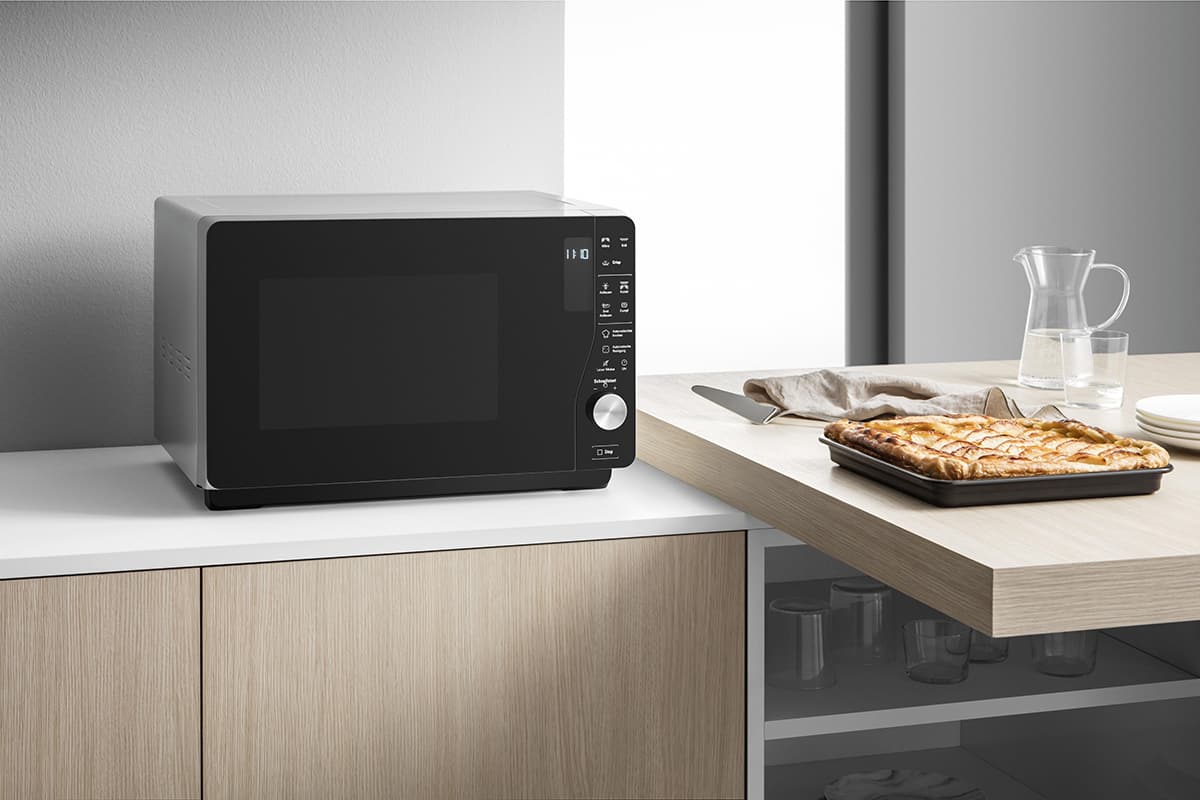You’re probably here because your oven takes too long to preheat. They say it should only take between 12 and 15 minutes for an oven to preheat to 350°F, but what if your oven takes twice as long or never even reaches 350°F at all?
There could be several causes behind your oven taking too long to preheat, such as a failing igniter, the design of the oven’s heating element, or the clock’s oven control board isn’t working properly.
In this guide, I’ll explain in more detail the common causes of an oven taking too long to preheat, what you can do to solve the problem, and what you can do to improve your oven’s preheating time.
How to Preheat an Oven

First and foremost, let’s talk about how to preheat an oven. If you’ve been in the baking game for over a month, feel free to skip this section and move on to the next.
Here’s what you need to do to preheat your oven:
- Empty the oven. Make sure there’s nothing on the racks except for an oven-safe food thermometer (if you have one).
- Shut the oven door and set the temperature. Some recipes ask that you preheat your oven to 350°F, while you need to crank it to 425°F for others. Just follow the recipe author’s instructions here.
- Wait for 10 to 15 minutes for the oven to preheat. It can take shorter or longer, depending on your oven model.
- After putting your food inside the oven, do not open the oven door. Every time you open the oven door, you allow heat to escape, which can lead to uneven baking.
Why Do You Need to Preheat an Oven?
Almost all baking recipes will instruct you to preheat your oven to 350° or 425°F, depending on what you’re baking. Preheating is a simple process of turning your oven on to a certain temperature and waiting for the inside to come up to temp. But why is this step necessary?
There are 2 main reasons you need to preheat an oven—to prevent your baked goods from collapsing and to limit your food’s exposure to the danger zone.
Prevent collapse
There are certain baked goods that rely heavily on a preheated oven to come out perfectly, such as soufflés and meringues. These food items are nearly completely made out of air, with eggs acting as a binding agent that gives them structure.
Now, what would happen if you were to bake a soufflé or a meringue starting from a cold oven? While the baking dish is sitting there, air will escape from the batter before it has time to cook. When air escapes, it causes the product to collapse and come out as a dense, slightly spongy mess that isn’t very appetizing, to say the least.
Meanwhile, if you were to place a soufflé or meringue inside a preheated oven and keep the oven door shut throughout the baking process, the heat inside the oven would immediately start firming up the egg binder and trapping air inside the dish where it belongs.
Reduce exposure to the danger zone
The danger zone is a temperature range (40 to 140°F) in which bacteria grows at an alarming rate. When you leave food out at room temperature (about 70°F) for too long, it will spoil a lot more quickly than it would in the fridge or inside an oven.
Many recipes, such as cookies, instruct you to transfer the dough from the fridge to the oven immediately. If your oven was preheated to 350°F, the chilled dough would have very limited exposure to the danger zone before its internal temperature reaches 140°F and beyond.
Now, since it takes about between 12 and 15 minutes for an oven to preheat, your chilled cookie dough balls may not even be exposed to the danger zone for very long. However, when baking large food items that time a long time to heat up—e.g., roasts—you’re giving bacteria a chance to take over.
Why Is My Oven Taking So Long to Preheat?
As previously indicated, there are three common causes behind why your oven is taking too long to preheat—your oven has a failing igniter, the oven’s design prevents the heating element from working quickly, and the oven’s control board is on the fritz.
Let’s examine each of these causes individually before I explain what you can do to resolve the issue.
Failing igniter (gas oven)
There are two ways to look at this. The first is that the igniter isn’t producing a spark, so the gas flowing into the oven isn’t catching fire. You can immediately tell whether this is the problem. You’ll smell gas in your kitchen since it will continually pour into the appliance without being burned up.
The second is that the igniter isn’t disengaging the safety valve to allow gas into the oven in the first place. When you turn the dial or press the temperature control button, the gas supply valve stays shut, and the ignition spark has nothing to light up. If your oven doesn’t feel hot at all, you’ll know this is the problem.
In either case, you might have to replace the ignition system completely. This video will teach you how to crack open your oven and replace the igniter safely.
Heating element issues (electric oven)
Similar to the previous issue, there are two ways to look at heating element issues. The first is that the heating element is on the fritz. If, after turning the oven on, the heating element doesn’t heat up, it may be broken and need to be replaced. You might need to use a multimeter to detect continuity in the heating element.
Secondly, modern electric oven models keep their heating coils away from view. That way, there is no risk of accidentally touching the coils when placing food in or taking food out of the oven. The coils are separated by walls, which somewhat inhibits the transfer of heat. This is an intentional design, and there’s nothing you can do but to wait for the oven to come up to temperature eventually.
Faulty control board (electric oven)
The electric control board is the brain of the oven. It tells the oven when to turn on and off, when to change temperatures, when to disengage the impeller fan (for convection models), and so on. Of course, all of the commands rely on a human user, but the control board relays everything to the other parts of the oven.
Over time, the control board may fail to relay commands to the heating element. This is especially common in older electric oven models. You’ll need to use a multimeter to perform an ohm test and check for continuity. Worst-case scenario, you’ll need to replace the control board, but purchasing a new oven may make more sense.
How to Improve Oven’s Preheating Time

If your oven turns on but takes forever to come up to temperature, there’s one simple hack you can try: turn on the broiler for 3 to 5 minutes.
Most ovens will have a broil function. Broiling is a method of cooking the surfaces of food items at an extremely high temperature—much higher than what a traditional oven could reach. Broiling in an oven exposes the top of your food to flames from a distance of just a couple of inches. The result of broiling is additional crispiness and caramelization.
Broilers typically reach a temperature of 500 to 550°F, which is much higher than most baking recipes require. However, if you leave the broiler on for 3 to 5 minutes, it will super-heat the inside of the oven, and the burner or heating element in your oven will have to work less at increasing the temperature. Instead, they will only have to maintain the temperature after a slight drop when the broiler turns off.
Is It Necessary to Preheat an Oven?
Earlier, I mentioned that preheating is required for certain recipes, especially those that rely on air pockets for structure. This includes soufflés and meringues, but this also extends to breads and cookies.
Now, what about everything else? To be perfectly honest with you guys, preheating an oven isn’t completely necessary. You can get by with baking pies, pastries, cakes, and all sorts of delicious desserts without having to preheat your oven.
Why You Need an External Thermometer for Your Oven
Most gas and electric ovens come with a built-in thermometer. After all, you have to set the thermometer to a certain temperature in order to preheat your oven. However, you should know that oven thermometers aren’t always accurate. How inaccurate, you ask? Try 50°F!
The main reason that an oven’s thermometer is out of whack is its placement. The thermometer might be situated in a spot that receives more heat than the air inside the oven. So, while your oven may have detected a 350°F internal temperature, the air inside the oven might be closer to 300°F.
What you can do to counteract the inaccuracy of the built-in thermometer is to get your own thermometer. Something as simple as the Rubbermaid Stainless-Steel Oven Thermometer will tell you precisely what the internal temperature is without measuring the temperature of the walls or racks. Of course, the placement of the thermometer will determine how accurate it is. So, if you get the Rubbermaid, place it in the middle of the center rack.






